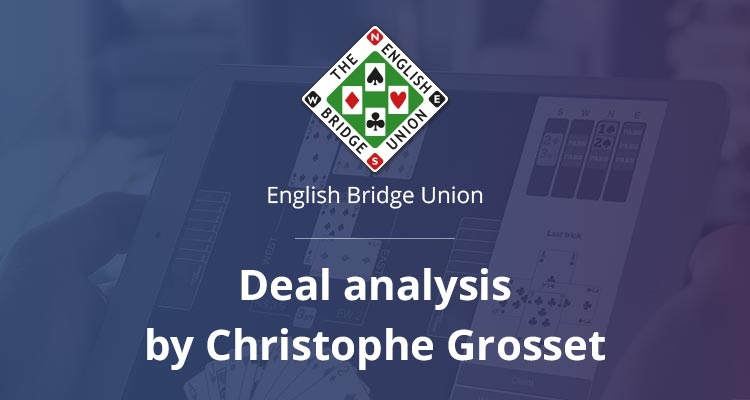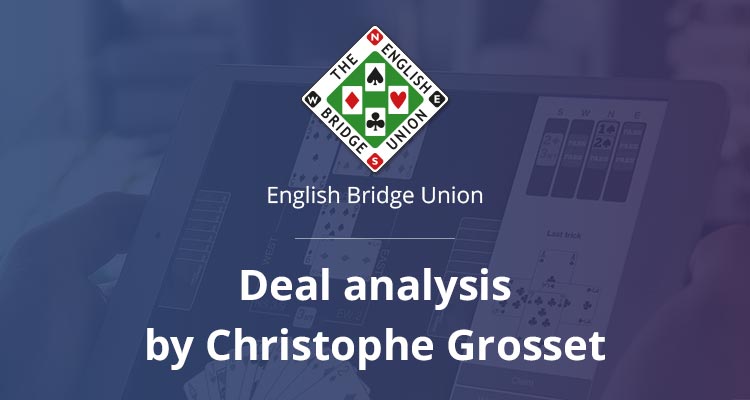
Deal analysis by Christophe Grosset for the EBU magazine (October 2018 issue)
Christophe Grosset writes a column in the English Bridge Union magazine in which he makes a bridge deal analysis that he played on Funbridge. You can find below his latest article published in the October 2018 issue.

Iam sure you all know about the Funbridge app available on smartphones, tablets and computers that allows you to play bridge online whenever you want, but have you heard of the Funbridge blog?
Since its launch in 2003, Funbridge has a regularly updated blog where you can find News about Funbridge and the bridge world, reports of international events such as the Bermuda Bowl or the European championship, deals analysed byJérôme Rombaut (a member of the French open team), interviews of influential bridge personalities and finally videos like the ones of Milan Macura that we discussed in the previous article.
Here is a hand I played on a video playing against Argine,
Funbridge’s artificial intelligence, recently:
 |
| West | North | East | South |
| PASS | |||
| PASS | PASS | ||
| ALL PASS |
Playing a 15-17 no trump, the auction was quite straightforward, with South transferring to hearts then bidding 3NT, which was the final contract. East led the ♠2, dummy played a low spade and West’s queen is taken by declarer’s king. You are playing five boards, match scoring in IMPs, how would you play?
Making nine tricks should be quite easy. If hearts are not 5-1 declarer can quickly establish four hearts after driving out the ace and make two spades, four hearts, one diamond and two clubs. Moreover, even if the hearts were 5-1, the ♠2 lead gives away the fact that the spades are divided 4-3, meaning that declarer would only ever lose two spades, added to one heart and one diamond. This gives declarer time to also play on diamonds for a sure second trick.
You should focus on making the maximum number of tricks – when playing a match of five boards it is not unlikely that one or two IMPs will decide the match. Just make sure that you do not risk your contract while doing so. How can do you this?
The lead of the ♠2 as well as the ♠Q from West tells us that east has the ♠J. This means that if East takes the lead, they will not be able to play another spade without giving us an extra trick. So, play a club to the king at trick 2 followed by a diamond to the jack. If east takes the king, he has no good suit to play: a spade or a club would give you a trick while heart and diamonds are your longer suits. If your ♦J wins the trick, you can now switch to hearts having made an extra diamond. Had declarer played the natural ♥Q at trick two, West would be able to win their ace and play a spade, limiting you to nine tricks.
Playing the way I suggested was actually worth two extra tricks, because East, not knowing what to play after winning the ♦K decided to try the ♠J hoping North started with ♠K10 and was now down to the bare 10.
These kind of grinded-out IMPs can add up even in a long match. The best players in the world usually gain about one IMP per board – no more. If you are interested by reading and watching more boards to improve your bridge, click here.




[…] Read article […]